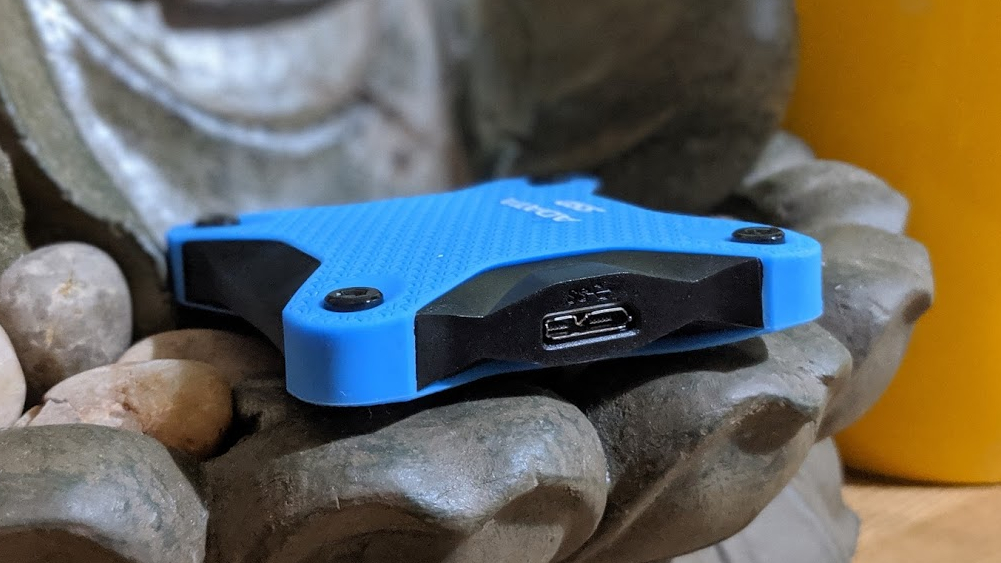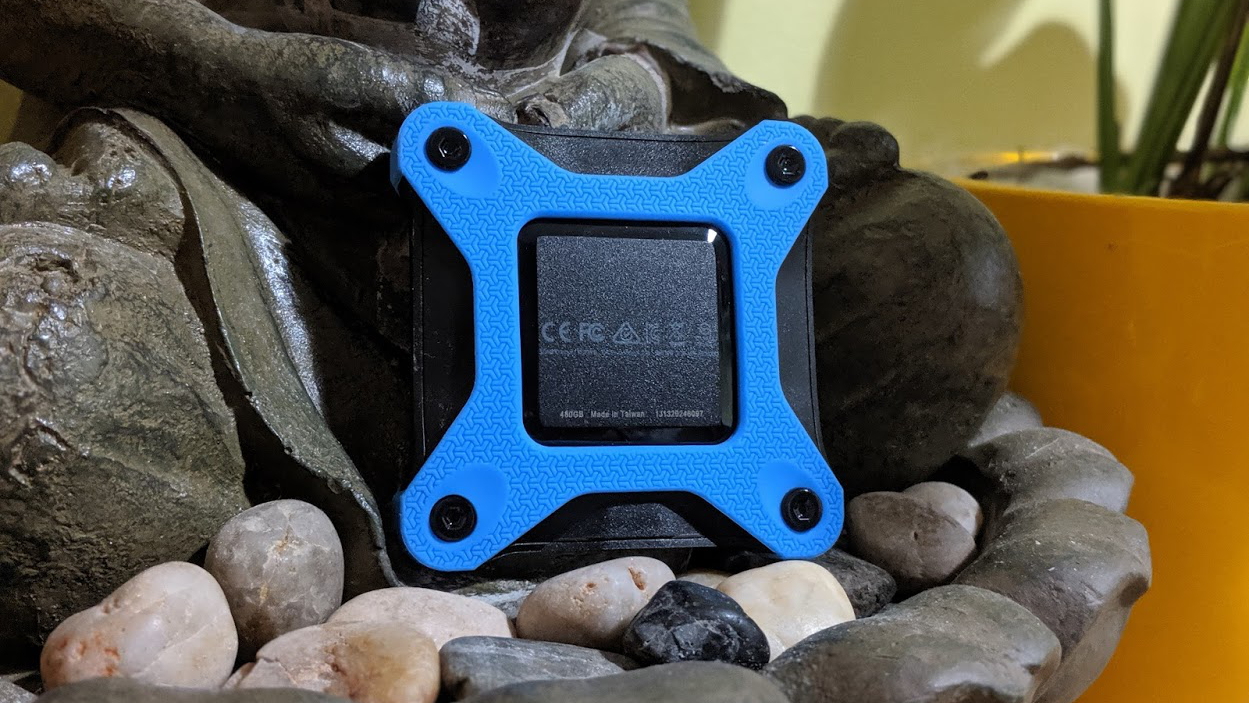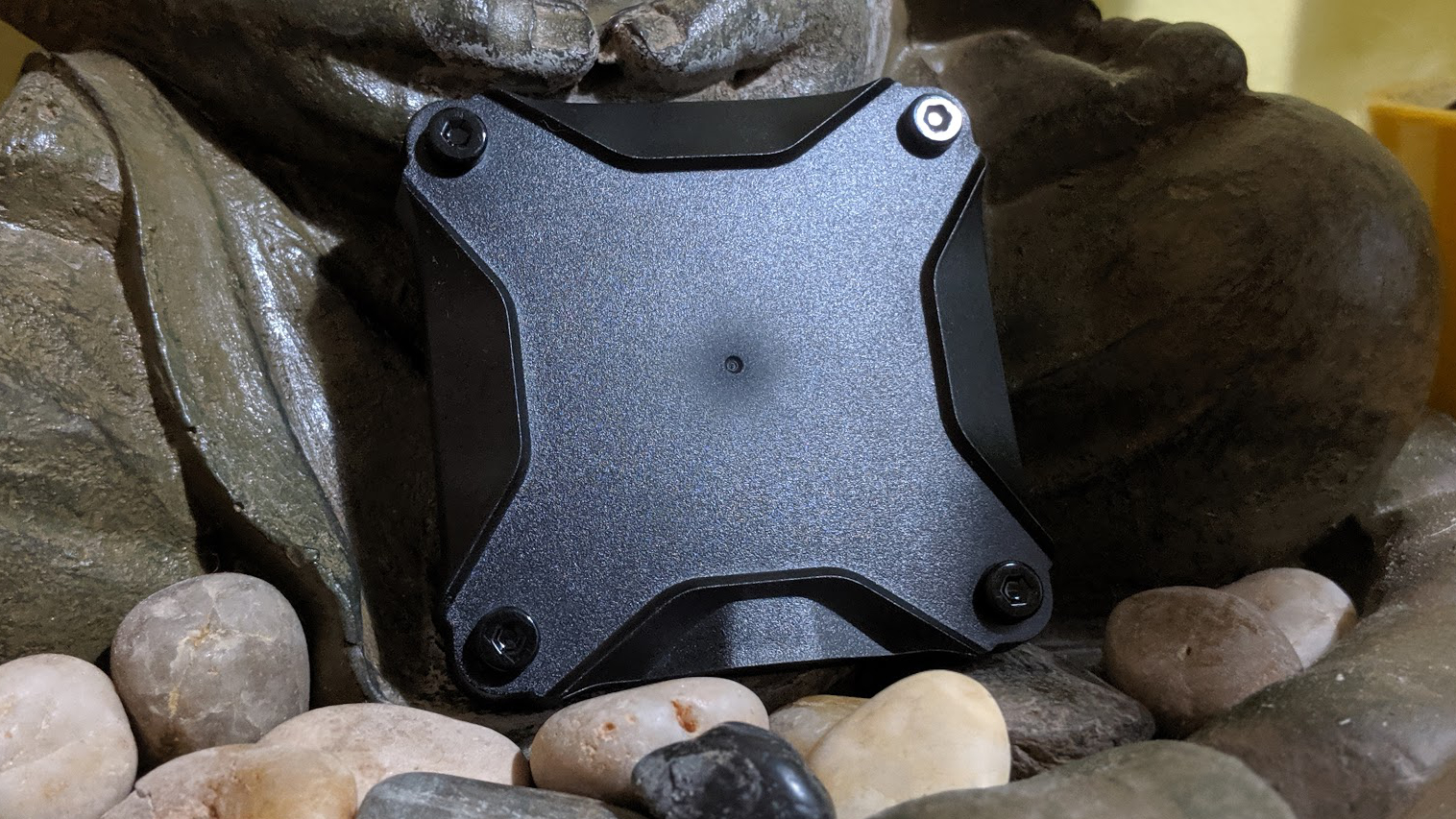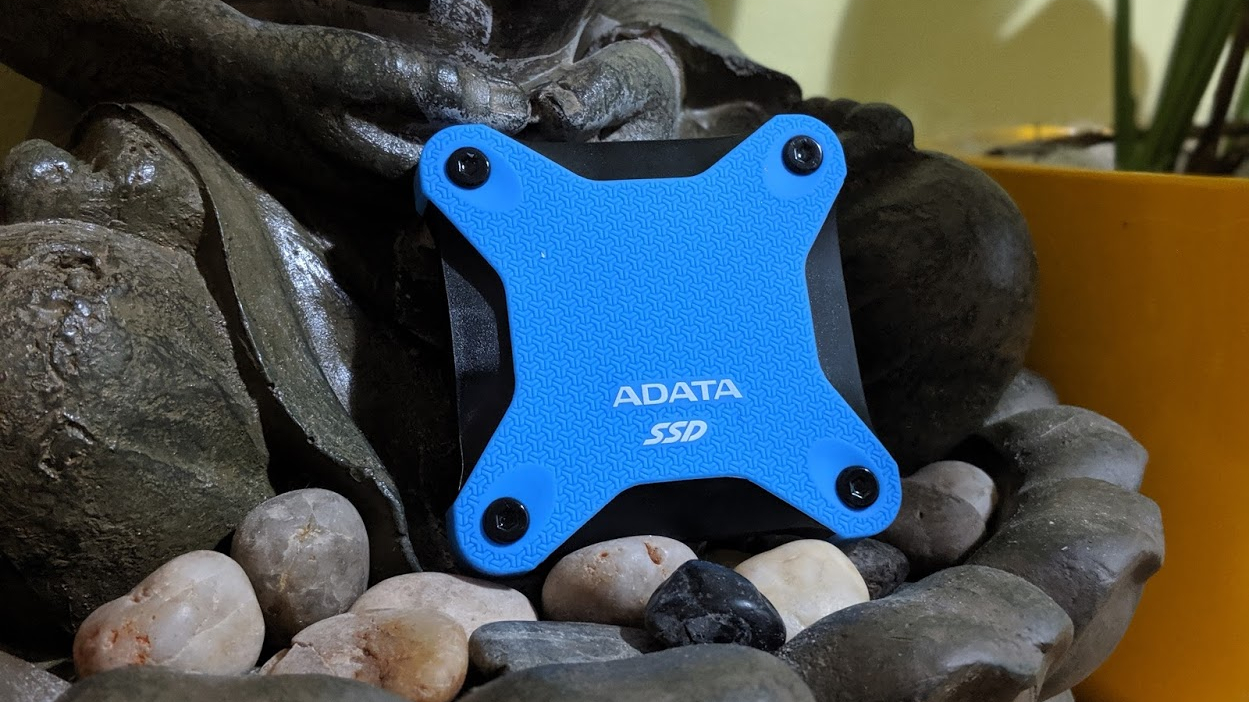TechRadar Verdict
The Adata SD600Q is not the smallest, or the cutest, or the fastest rugged external drive. It is, however, the cheapest by a significant margin thanks to QLC technology. We’d love it to have a Type-C connector and be a bit faster, but neither of those quibbles are deal-breakers.
Pros
- +
Cheap
- +
Solid
- +
No-frills design
Cons
- -
Not waterproof
- -
Average read performance
- -
Still using flat USB port
Why you can trust TechRadar
Adata is probably one of the most prolific storage vendors on the market, which is very surprising given that it doesn’t produce any components by itself and has to rely on third-parties for parts. Yet over the past few years, we have seen a steady stream of Adata devices that have offered compelling price/performance ratios.
Of particular interest are the external hard disk and solid-state drives of which the SD600Q which we’re reviewing today (480GB model) is the latest iteration. Past models have included the HD830, the HD710M, the SE730H, the SD700 and the SV620H. Out of the lot, the SD700 remains our firm favorite. Let’s see how the SD600Q compares, more than two years later.

Design
The drive is available in three colors, although actually, the chassis itself is black and it is the rubber sleeve that protects it which has a different color (blue, red or black). You can remove the latter to give the SD600Q a more anonymous look and shave off a few grams.
The drive is tiny: about 75 x 75 x 15mm with a weight of 60g. Using ABS plastic makes it light and shock-resistant with a lesser chance of scratches showing up. There’s a blue status light that shines through a translucent part of the chassis to indicate when the device is in use.
Other than a cable that connects to a flat USB connector, there are no other accessories bundled. According to Adata, the SD600Q can survive falls from up to four feet and meets the MIL-STD-810G standard, but has no IP68 rating. Therefore, this is not a waterproof storage device.
Here’s how the Adata SD600Q performed in our benchmark tests:
CrystalDiskMark: 299MBps (read); 395MBps (write)
Atto: 425MBps (read, 256mb); 401MBps (write, 256mb)
AS SSD: 416MBps (seq read); 394MBps (seq write)
Performance
The benchmarks were carried out on a Dell XPS 15 9575 2-in-1 laptop. Note that this notebook only has Type-C ports and we used the bundled connector to perform our benchmarking.
The drive comes with three-year warranty and uses the same component – as reported by CrystalDiskInfo – as the SU630 which was, back in November 2018, the first drive from an independent maker of SSDs based on 64-layer, 3D QLC NAND, likely to be from Intel. The SSD controller, likewise, is almost certainly a Maxio Technology MAS0902A.
Sign up to the TechRadar Pro newsletter to get all the top news, opinion, features and guidance your business needs to succeed!
The endurance of the SU630 was rated at up to 40,000 read and up to 65,000 write IOPS in the case of the 480GB and 960GB SKUs, while sequential read performance was a claimed up to 520MBps, with sequential write performance up to 450MBps.
In real life, CrystalDiskMark clocked 299MBps and 395MBps (read/write speeds respectively) with Atto hitting 425MBps and 401MBps respectively.Transferring a 10GB file was done in about 36 seconds or around 286MBps.
There’s no software bundled with the SD600Q but you can download OStoGo and HDDtoGo. The first allows you to install Windows 10 via your USB storage device, and the second app allows you to “help you keep your personal data available on the road”.

The competition
The SD600Q comes in three storage capacities: 240GB for $39.99, 480GB for $59.99 and 960GB for $139.99 (all prices are from Amazon US). It is clear that Adata is not afraid to compete on price. The bottom line is that nothing, not even the SD700, comes close to the SD600Q thanks to the use of QLC technology. The 480GB model we reviewed is the sweet spot with a cost of only $125 per TB, a slight premium over the cheapest comparable internal SSD (a $94 Pioneer SSD).
The Samsung Portable SSD T5, one of our all-time favorite drives, is a viable alternative although it does carry a near 50% premium on the price of the SD600Q. It doesn’t have any IP rating, but has Samsung’s pedigree attached to it.
Newcomer-to-the-market Teyadi sells a 1TB drive that looks like a twin of the T5 for $138.40 after a 10% savings coupon at Amazon. We’ve never heard of that brand but given how mature the SSD market is, it is unlikely that means trouble. Backed by a three-year warranty and with a Type-C connector, it would be a good substitute for the SD600Q 960GB model.

Final verdict
You won’t buy the SD600Q for its performance levels, you will buy it because it’s the cheapest external solid-state drive on the market – by quite a margin. No, it isn’t as fast as the Samsung T5 or SanDisk Extreme Portable SSD but then again, it is far cheaper. The design is mature and the improvements over the SD700, for example, are iterative and minor in nature. The price, though, is what makes it a sweet deal.
Potential improvements? 96-layer NAND chips are coming soon so it is likely that they will end up in the follow-up model. Simplifying the drive’s design to make it sturdier could help it earn an IP68 rating, and we’d love to see a Type-C connector replacing the flat USB port.
- We’ve picked out the best external hard drives for your PC or Mac

Désiré has been musing and writing about technology during a career spanning four decades. He dabbled in website builders and web hosting when DHTML and frames were in vogue and started narrating about the impact of technology on society just before the start of the Y2K hysteria at the turn of the last millennium.
